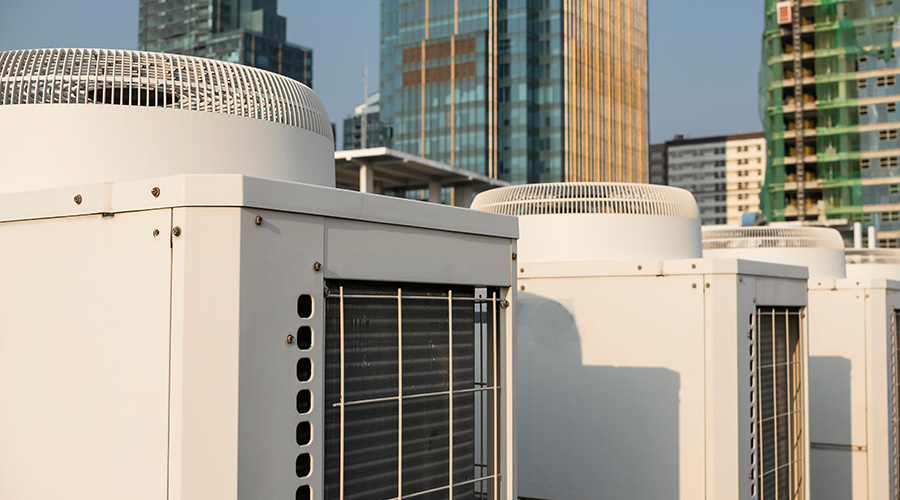Going Deeper Into ‘Green’
Planting landscapes for environmental benefits is the beginning, but the next step is paying greater attention to equipment and processes
with input from

|
The U.S. Environmental Protection Agency’s (EPA) GreenScapes program is all about using landscaping to improve the environment. Green plants produce oxygen, cool the air, trap dust and dirt, filter pollutants out of the water and air, and help control runoff, erosion. Designing and planting landscapes for environmental benefits is the beginning, but managers also must be conscious of ongoing grounds care practices and how they affect the surrounding environment.
Equipment Issues
Small-spark ignition engines produce one-tenth of the nation’s mobile-source hydrocarbon emissions, and they are the largest single contributor to non-road hydrocarbon inventories, according to the EPA. That percentage is even higher in large metropolitan areas. But until recently, no regulation of lawn and garden equipment existed, and older models tend to produce higher levels of carbon monoxide, volatile organic compounds and nitrogen oxides.
Today, EPA regulations govern: small-spark ignition, non-handheld; non-road vehicles engines; and small-spark handheld engines. Non-road vehicles include tractors, ride- on mowers, generators, air compressors and commercial turf equipment, such as aerators, topdressers, and utility vehicles with less than 25 horsepower. Non-handheld engines include leaf blowers, string trimmers, chain saws and brush cutters.
The EPA is phasing in new Phase 2 standards for small-spark, non-handheld and handheld engines. Equipment manufacturers have until 2007 to make a complete transition and comply with Phase 2 standards. Phase 1 standards took effect for most new engines in 1997.
The new engines will emit 59 percent less hydrocarbons plus oxides of nitrogen than under the Phase 1 standard. Phase 1 was expected to result in a 32-percent reduction in hydrocarbon emissions.
The EPA created the new standards to help reduce hydrocarbon emissions that form ozone, which is a significant component of smog. Ozone continues to be the most widespread problem affecting the nation’s air quality. Regulating small-spark ignition emissions will help states in their progress towards overall compliance with the National Ambient Air Quality Standards for ozone.
Engine Advances
Emerging engine technology, such as overhead-valve engines, not only will result in significant reductions in emissions. It also will reduce fuel use. The EPA estimates fuel saving of 15 percent annually from the technology.
Phase 2 standards for small-spark-ignition handheld engines also have been issued. The EPA devised these standards to be similar to those already adopted by California. This final rule will reduce emission of hydrocarbons plus oxides of nitrogen by an additional 70 percent beyond the Phase 1 standards. The EPA started phasing in the new standards in 2002.
The EPA also is adopting standards that govern two additional classes of non-handheld engines that will apply to engines below 100 cubic centimeters displacement used in non-handheld equipment applications.
Since the publication of the EPA’s Notice of Proposed Rulemaking in 1998, manufacturers have made significant advances in emissions reduction technology for handheld engines. New, cleaner-running engines also will use less fuel, with the EPA estimating they will result in a 30 percent reduction in fuel use.
Another advantage of overhead-valve engines is reduced noise output. Many municipalities have restrictions or even bans on certain pieces of lawn and garden equipment because of the noise they produce. Gasoline-powered leaf blowers have been the main target of such bans and restrictions.
The use of gas-powered leaf blowers is also a target of bans or restrictions because they blow dirt, dust and other debris into the air, contributing to pollution and harming air quality. Also, improperly used leaf blowers can damage or stress plants, as well as disseminate spores of fungus to non-diseased plants.
Alternative Fuels
Manufacturers have made great strides in refining gasoline-powered engines. Today, they are less polluting and more fuel efficient, remain cost-effective, and are more reliable than ever. But manufacturers are not ignoring alternative fuels, such as electricity, compressed natural gas, propane and biodiesel.
Propane-powered mowers are rare. Electric mowers are available, but they might not be practical for most commercial applications. Biodiesel blends can be used in any conventional diesel engines with few if any modifications.
Grounds care departments can take advantage of the benefits of alternative fuels in their fleet vehicles. Many manufacturers are producing large trucks, pickups and cars that use electricity, biodiesel, propane and compressed natural gas.
Electric vehicles do not produce tailpipe emissions, but the generators that produce electricity used to charge electric-vehicle batteries do emit pollutants. Several major automobile manufacturers are producing high-performance electric vehicles, including sport-utility vehicles and pickup trucks, which grounds care departments could use.
Departments have long used electric golf-cart-type utility vehicles to transport people and small tools and materials between sites. In most cases, recharging batteries requires no special hook up, but they might require special outlets or modified hookups. Currently, batteries can provide power to take the vehicle 50-100 miles per charge, depending on the battery’s type and age.
Biodiesel fuel is produced from a variety of renewable sources, such as soybean oil, canola oil, sunflower oil, cottonseed oil and animal fat. Most biodiesel fuel is produced in the United States.
The biodiesel industry is rapidly expanding, and the fuel is becoming readily available. The National Biodiesel Board says biodiesel can be made available in every state, even if no fueling station exists.
Reductions in emissions from the use of biodiesel will vary, depending on engine design and fuel blend. B20, for example, is 20 percent biodiesel and 80 percent petrodiesel. The EPA estimates that using B20 will result in a 10 percent reduction in carbon monoxide emissions, a 10 percent total reduction in hydrocarbon emissions, a 20-percent reduction in sulfate emissions, and a 2-percent reduction in nitrogen oxides emissions.
Biodiesel will not adversely affect engine performance, and it actually can prolong the life of heavy-duty engines. Most major manufacturers will honor the warranties if B20 is used in the vehicle.
Propane is a byproduct of natural-gas processing and petroleum refining. Vehicles have used propane as a fuel for vehicles since the 1940s. Compared to gasoline, propane can lower emissions of carbon dioxide, carbon monoxide and other undesirable components. Some vehicles today have two-fuel systems that allow them to run on propane or gasoline. Vehicles can be converted from gasoline to propane for about $2,000. Propane costs about the same as gasoline, and all 50 states have refueling stations. Finally, propane vehicles require no special maintenance.
More than 85,000 compressed natural-gas vehicles are operating today, according to an EPA fact sheet. There are also about 1,300 refueling stations. These vehicles can be refueled easily by installing a small compressor connected directly a building’s natural gas supply.
Compressed natural gas burns very cleanly, and its use can reduce carbon monoxide emissions by 90-97 percent, hydrocarbon emissions by 50-75 percent , and nitrogen oxides emissions by 35-60 percent. The fuel also produces very little particulate matter and relatively few toxic pollutants.
Finally, compressed natural gas is less expensive than gas, but it does not contain the same amount of energy as gasoline, so vehicles require more frequent refueling. Training is required for all maintenance personnel working on compressed natural gas vehicles.
Spotlight: Greenscapes
The U.S. Environmental Protection Agency’s GreenScapes program seeks to provide cost-effective, environmentally friendly solutions for large-scale landscaping. The program encourages companies, facilities, government agencies and other entities to make better decisions regarding waste generation and disposal. Among the program’s initiatives are these:
- provide information about cost savings that can be achieved from reducing material use and waste
- educating land managers about the benefits of environmentally beneficial landscaping
- publicizes case studies and technical to help alleviate concern about alternative processes and products.
For more information, visit epa.gov/greenscapes
|
Related Topics:












